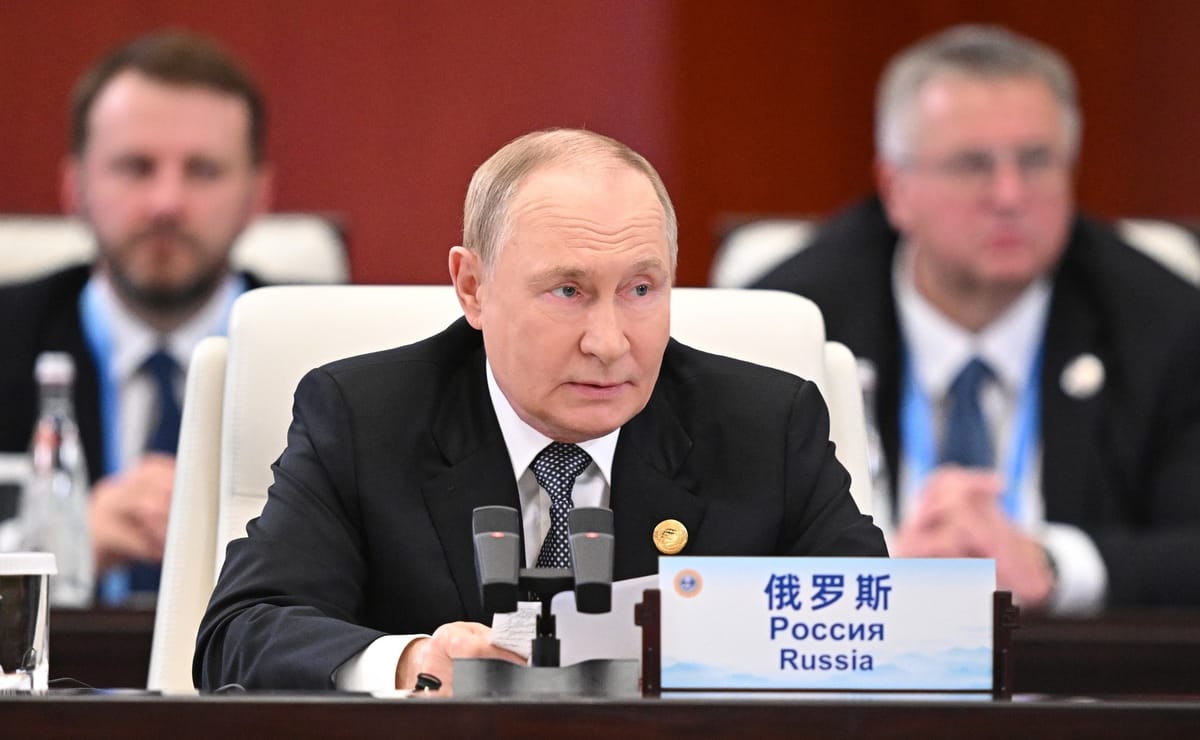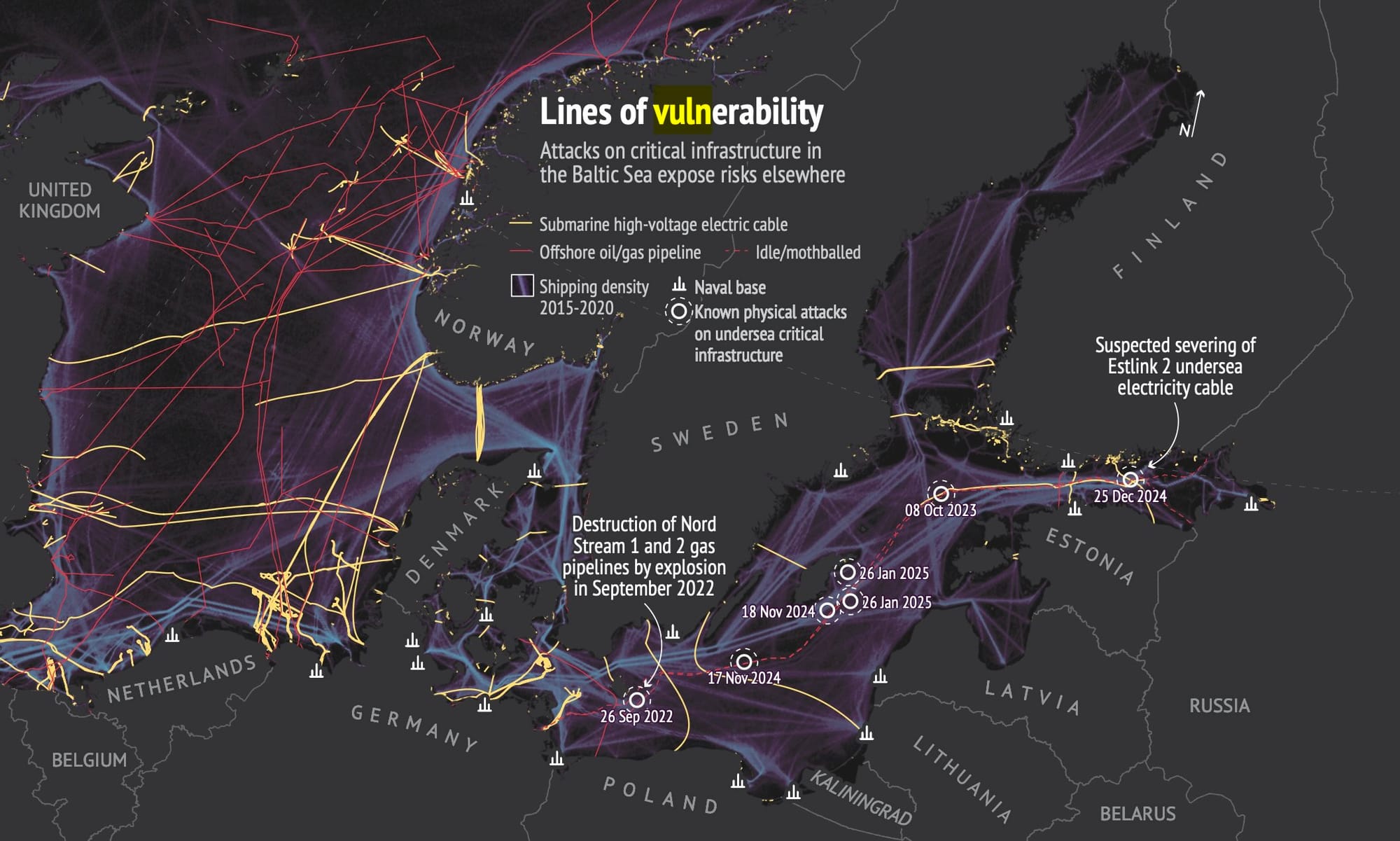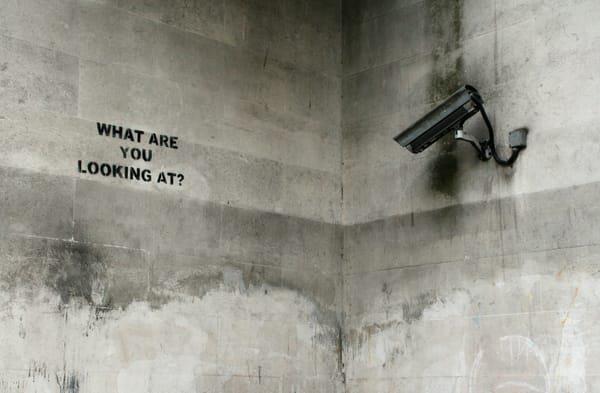Europe's energy systems are frighteningly vulnerable to Russian hybrid attack, EU warns
"Critical infrastructure faces not only unresolved weaknesses but mounting geopolitical risks."

Europe's energy systems are riddled with "deep vulnerabilities" that have left critical infrastructure vulnerable to Russian attack.
That's the warning in a new report from the European Union Institute for Security Studies (EUISS), an EU thinktank, which reported that Moscow views gas and electricity networks as "priority targets.
The briefing called for an urgent rethink of polices set during the long peace that has becalmed the Continent, leaving risks and vulnerabilities to accumulate to dangerous levels.
It demanded a move away from defensive strategies which hinge on responding to threats, rather than building resilience.
"Russia is already engaging in hybrid aggression, targeting electricity cables and gas pipelines in the Baltic Sea, and exposing deep vulnerabilities at the heart of Europe’s energy system," research analyst Caspar Hobhouse warned.
"Critical infrastructure faces not only unresolved weaknesses but mounting geopolitical risks – particularly in the offshore transmission network. As long as this lasts, the EU will remain under constant threat from low-risk attacks causing significant societal, economic and military disruption.
"It is courting disaster under a sword of Damocles."
Europe under attack

Current methods of system planning rely on paradigms and processes built around a "short-term notion of efficiency" which overlooks security and geopolitical risk, the EUISS warned.
This has led to a pair of major challenges. The first is a physical threat to energy infrastructure, such as the cutting of submarine cables by Russia's "shadow fleet" of stealthy attack vessels.
Less than a year ago, in December 2024, Finnish authorities accused the crew of a Russian ship of dragging an anchor along the seabed to sever the Estlink 2 undersea power cable connecting Finland and Estonia. Military grade detection hardware was allegedly found in its hull.
READ MORE: Europe facing AI “polycrisis” as superintelligence “looms on the horizon”
The captain and two officers have been charged in Finland for aggravated criminal damage and aggravated interference with telecommunications, as well as other crimes, and have pleaded not guilty.
"This was far from an isolated incident, and reflects a consistent strategy by the Russian Federation to undermine Europe’s energy security," the EUISS said.
Secondly, the European electricity grid is approximately 40 years old on average and has faced years of underinvestment.
The think tank wrote: "While some understanding of modernisation and adaptation are filtering into the energy system, security concerns are not featuring prominently enough."
Threats to European energy security
The threats highlight include security issues in the Netherlands, which plans to generate 75% of its power via offshore wind by 2023 but relies on only a few vulnerable landing points.
The Baltics have just four connections to the European grid - three of which run through waters regularly navigated by Russian ships - while Europe’s islands are "uniquely vulnerable" and often depend on one or two mainland connections.
Responses to these threats have been reactive in nature, rather than proactive. An EU Joint Communication in February 2025 proposed solutions such as fitting submarine cables with armour, burying them beneath the seabed, speeding up repairs and improving surveillance.
READ MORE: Russian cyber-warriors blitz Europe in bid to "disrupt societal stability"
These ideas "patch over existing vulnerabilities without solving them". For instance, the NordStream pipeline attack shows that pipes can simply be blown up - and armour is unlikely to stop Russia's agents from doing serious damage.
To tackle the emerging threat, the EUISS urged Brussels to focus on building an energy system that is resilient by design, featuring "higher volumes of inter-connection, flexible hybrid transmission and multiple diffuse connection points". This should help to reduce the threat posed by single, Death Star-style points of fragility and vulnerability.
The EUISS warned: "Europe’s energy system is under attack. It is time to put it on a war footing."




